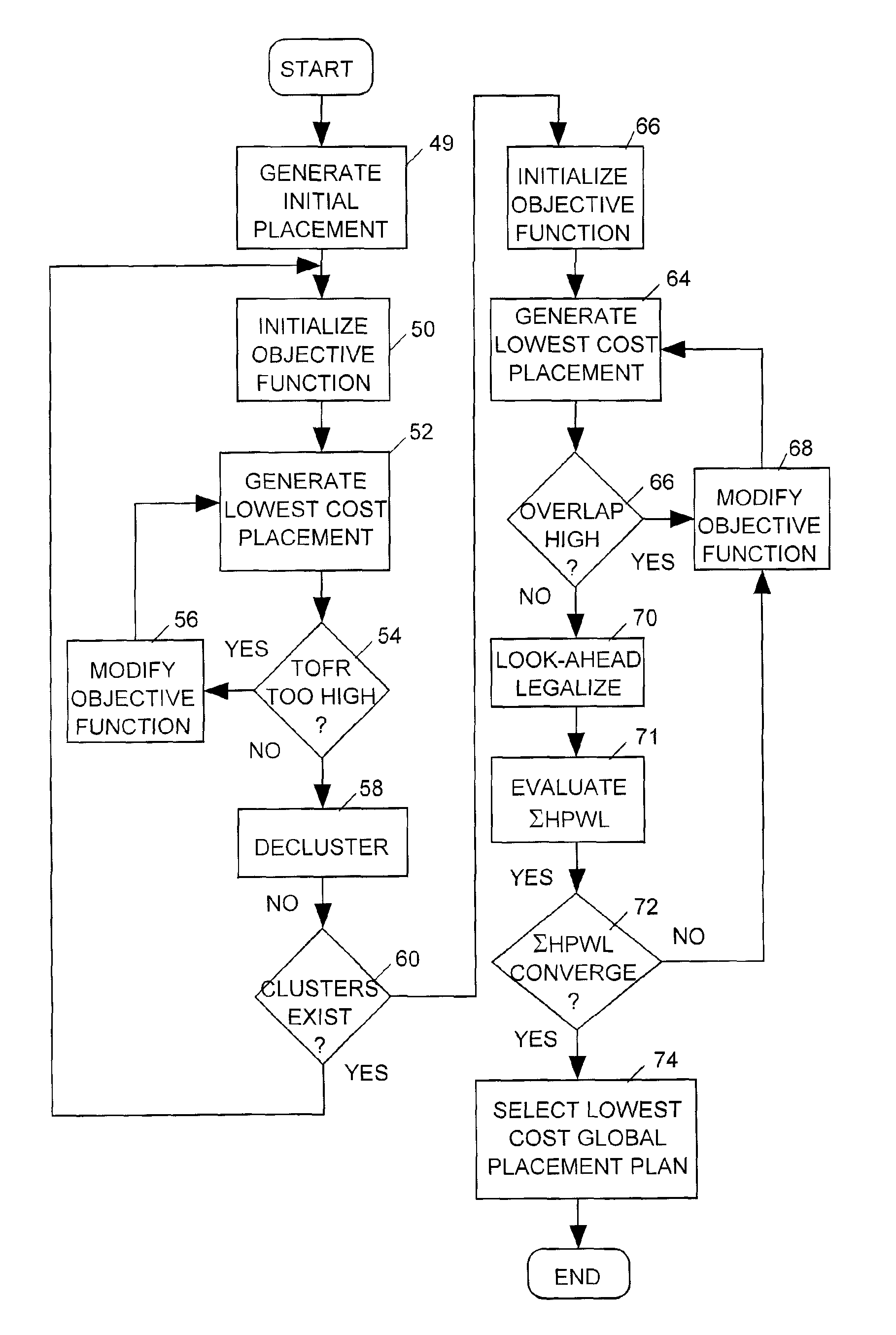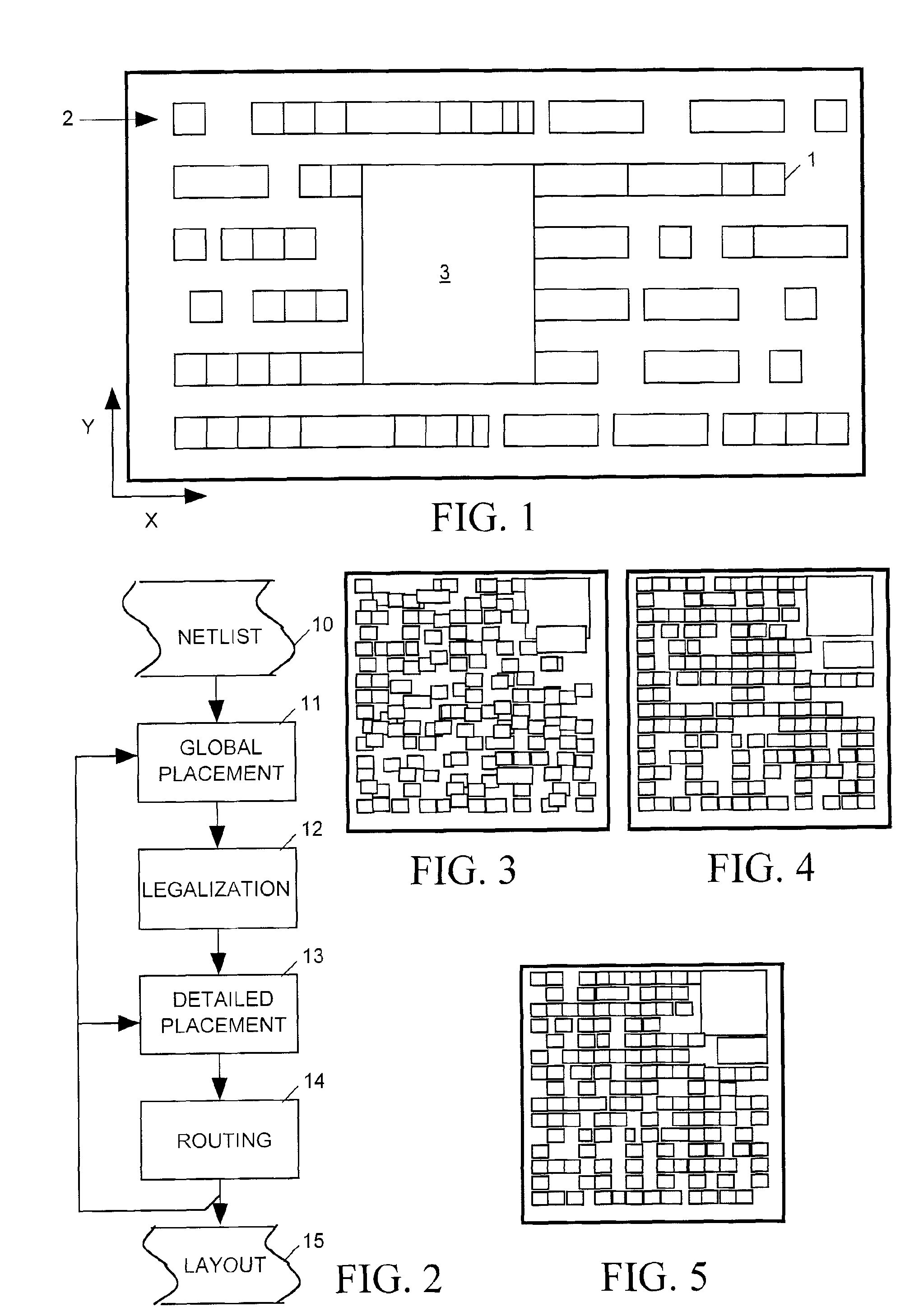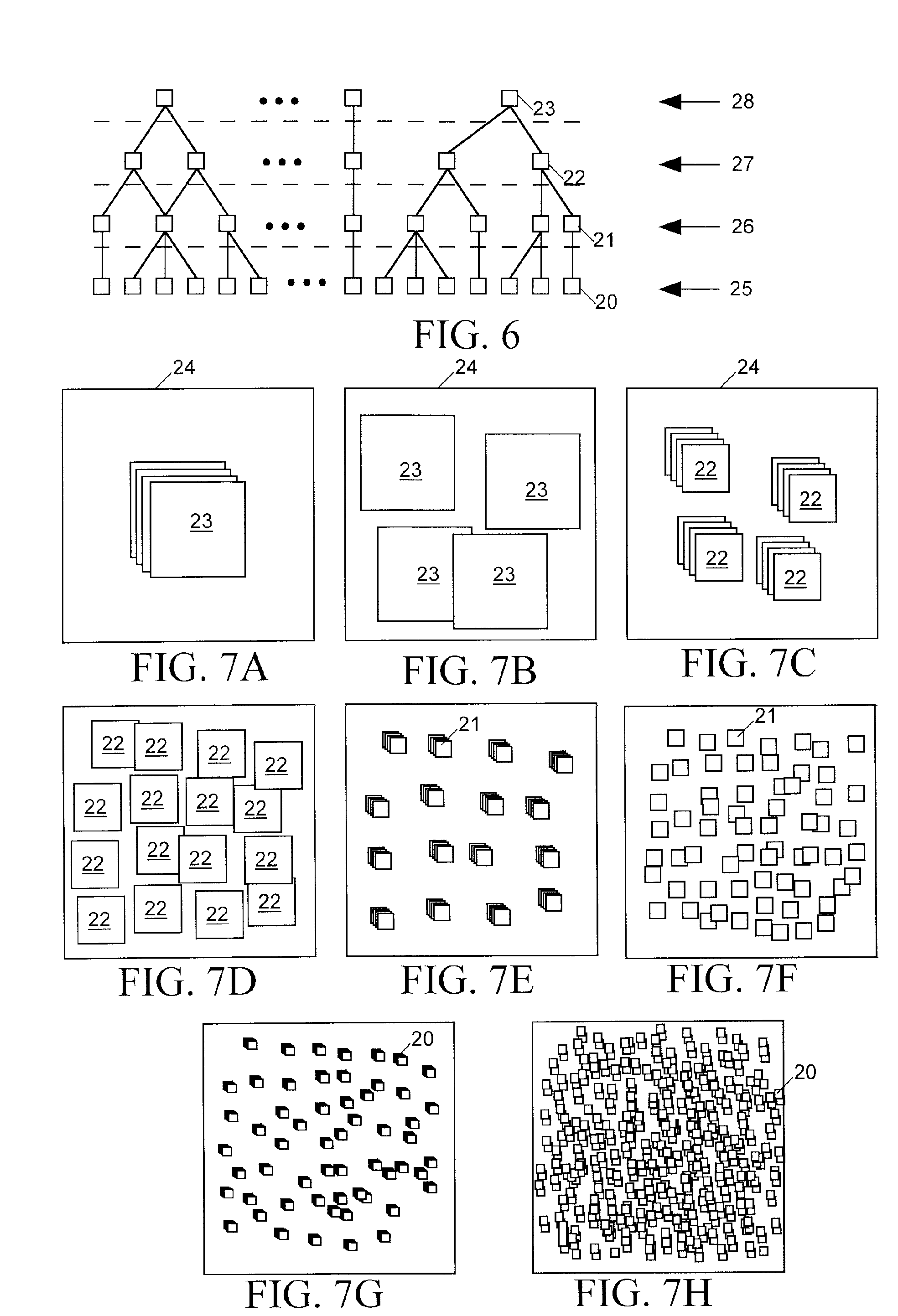Hierarchy-based analytical placement method for an integrated circuit
a placement method and integrated circuit technology, applied in the field of analytical placement algorithms, can solve the problems of excessive routing congestion in any region, increased wire length, and difficult routing, so as to improve the routability of the global placement plan, improve the routability, and improve the routability
- Summary
- Abstract
- Description
- Claims
- Application Information
AI Technical Summary
Benefits of technology
Problems solved by technology
Method used
Image
Examples
Embodiment Construction
[0031]The invention relates to a method for generating a global placement plan specifying approximate positions of cell instances within an integrated circuit (IC) to be fabricated. A netlist describes an IC as a set of cell instances having terminals interconnected by conductive networks (“nets”). A placement and routing (P&R) tool converts a netlist into an IC layout, a data file indicating a position within the IC of each cell instance and describing the physical arrangements of the conductors forming the nets. As illustrated in FIG. 1, cell instances 1 implementing small devices, such as transistors and logic gates, are of standard height in the y direction of the x-y plane of the IC surface and of varying width in the x direction, and they are normally laid out in non-overlapping positions along parallel rows 2 of the standard height. “Macro cells”3 implementing larger devices such as memories and processors can span several rows. The spaces between rows 2 are reserved for rout...
PUM
 Login to View More
Login to View More Abstract
Description
Claims
Application Information
 Login to View More
Login to View More - R&D
- Intellectual Property
- Life Sciences
- Materials
- Tech Scout
- Unparalleled Data Quality
- Higher Quality Content
- 60% Fewer Hallucinations
Browse by: Latest US Patents, China's latest patents, Technical Efficacy Thesaurus, Application Domain, Technology Topic, Popular Technical Reports.
© 2025 PatSnap. All rights reserved.Legal|Privacy policy|Modern Slavery Act Transparency Statement|Sitemap|About US| Contact US: help@patsnap.com



